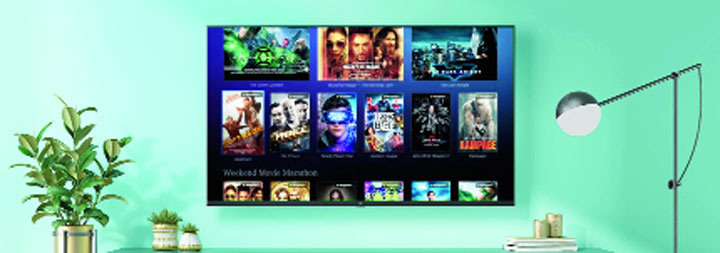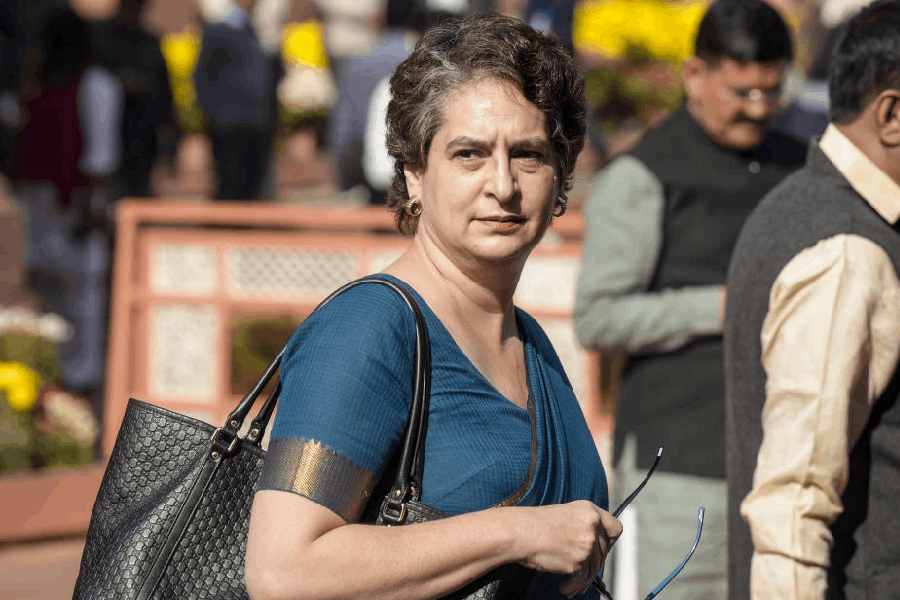Last week, Redmi general manager Lu Weibing made an interesting post on the Chinese microblogging platform Weibo. He congratulated Xiaomi CEO Lei Jun and then asked his followers on Weibo a question: “Do you want Redmi to make a TV?” A Redmi TV? Well, hold your horses and let’s focus on what’s already there — Mi TVs, which are finding space in every other Indian home, thanks to innovative features at “honest prices”.
t2 found out from Eshwar Nilakantan, category lead, Mi TV, Xiaomi India, why his company’s product has caught our imagination.

OTT players such as Hotstar are betting big on sports leagues like IPL, ICC Cricket World Cup and so on.... During IPL 2019, the content streaming company introduced the concept of targeted advertisements, offering brands the opportunity to tap into the relevant target groups Picture: Xiaomi India
Xiaomi is a relatively new player in the smart TV segment in India. What have been some of the milestones and what have been the key one or two features that have brought you success?
We started our Mi TV journey in February 2018 and since our entry in the market, we have experienced an overwhelmingly positive response from consumers in India. In less than 15 months from its first sale, Xiaomi sold over two million smart televisions in India and sold over a million units in 14 months. Today, Mi TV remains the number one smart TV brand in India for four quarters in a row with market share of 39 per cent (according to the recent IDC Worldwide Quarterly Smart Home Device Tracker, Q1 2019).
All Mi TVs provide consumers with a product that perfectly combines innovative features and best specs at honest pricing. Our products are equipped with the PatchWall interface that has been specially designed for India, bringing together more than 14 content partners, both local and global, resulting in over 700,000-plus hours of content and across the largest library of video-on-demand providers.
Since most web shows get consumed on mobile phones, how important is the smart TV to the same segment of users?
According to a report from Boston Consulting Group, the Indian OTT market, which is currently valued at $500 million, is expected to reach $5 billion by 2023. India is also witnessing a boom in the sales of high-definition TVs, even in tier-2 and tier-3 markets, with features such as better picture quality, more immersive viewing experience and ultra-high resolution. This shows that TV sets are also being bought to watch OTT platforms like Netflix, Amazon Prime Video or Hotstar on big screens for a better experience. Sale figures of Amazon Fire Stick and Google Chromecast devices indicate that people are indeed watching content on demand on bigger screens.
TV is not something that one buys every year or two. What are some of the features that affect consumer decisions?
Yes, a TV is a family decision as it’s a long-term purchase. Keeping the same in mind, our recent marketing campaign called ‘Say it See it’ — based on Mi TVs — includes a typical Indian family set-up, where each family member is seen enjoying the television, signifying that our TV is for everyone and its features are designed keeping in mind consumers of all age groups. Like I mentioned earlier, in all Xiaomi TVs we have PatchWall, an interface specially designed for Indian consumers.
Coming to audio capabilities, the Mi TV comes with Dolby Atmos + DTS audio for a cinema-like sound quality. And we offer a brighter and better display. The main factor that distinguishes us from the competition is providing Mi fans and consumers an innovative customer experience with the best specs at truly honest price points. That’s our philosophy — innovation for all.
When is Netflix coming to Mi TVs?
We would not be able to comment on this business aspect. But we are constantly seeking to provide the best of smart TV experience to all our customers.
How important would be the 5G rollout when it comes to making people upgrade their television sets?
5G certainly holds a promising future for smart devices. Early this year, in February, Xiaomi unveiled its first 5G smartphone, the Mi MIX 3 5G in a global announcement during the Mobile World Congress in Barcelona.
All leading global smartphone makers are currently testing their 5G devices. However, the availability of a well-structured 5G network is going to take time. So we are yet to fully discover the potential of this technology and the degree of its impact on smart TV user experience, which we believe, we will get to know over time.
As streaming becomes more popular and people are willing to pay the price, where do you see advertising on TV in the future?
TV viewing habits and content consumption patterns have changed drastically over the past few years, with the emergence of OTT players. Owing to the exponential growth, brands have now tweaked their marketing strategies with a significant focus on advertisement through content on streaming platforms. OTT players such as Hotstar are betting big on sports leagues like IPL, ICC Cricket World Cup and so on. In 2018, more than 20 brands had partnered with Hotstar for the T20 league. Not only this, during IPL 2019, the content streaming company introduced the concept of targeted advertisements, offering brands the opportunity to tap into the relevant target groups.
However, in a country like India, a huge section of the population is still watching the conventional cable TV or consuming content through DTH players. While smart TVs and online content streaming have gained immense prominence in cities, the tier-2 and 3 markets are yet to be tapped. Therefore, brands are still investing/spending on television ads in order to reach out to a larger audience. TV ads are still the major expenditure area for many brands when it comes to their overall marketing budgets.
How much of an opportunity does the 55-inch and above category presents?
We launched our first Mi TV in February 2018 with Mi TV 4 (55) and later on extended the portfolio. Customers have always wanted entertainment on a big screen. Brands like Xiaomi are driving the growth of the 55-inch segment with high-quality smart TVs, packed with high-end features. Given the steady increase in 4K content, customers also want to future-proof their purchase with 4K TV, which is leading to the purchase of the bigger screen size.
Today, in the 55-inch segment, we have two SKUs (stock keeping unit) available. Mi LED TV 4 Pro (55) is the thinnest TV in the world with a profile measuring just 4.9mm in thickness. It has a 4K, 10-bit HDR panel, which is capable of producing over a billion colours leading to a great viewing experience. All this at Rs 47,999. The Mi LED TV 4X PRO sports a profile with brushed metallic finish that houses a 55-inch LED display with a 3,840 x 2,160 4K and a 10-bit HDR panel. This is priced Rs 39,999.
There are 8K TVs but do you think Indian content developers would be able to deliver?
As 4K becomes well-established and available to consumers, the TV industry is getting ready for the next big resolution jump towards 8K. However, it will still take some time for content creators to catch up to 8K. In a country like India, 4K is still a burgeoning technology. The primary reasons for this increased awareness are OTT companies are now providing 4K content, affordable 4K televisions and growth in content creation. Global reports suggest that the 4K TV market is expected to reach $380.9 billion by 2025.











